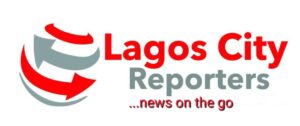Job Bank, Canada’s job-hunting and career-planning website, ranks the anticipated job prospects for dentists across the country as “good” to “very good”, its highest ranking, over the coming eight years.
“For dentists, over the period 2022 – 2031, new job openings arising from expansion demand and replacement demand are expected to total 13,500, while 10,500 new job seekers arising from school leavers, immigration and mobility are expected to be available to fill them,” notes Job Bank.
That’s an anticipated 3,000 jobs for dentists that will be going begging for a want of qualified candidates to fill those positions.
“Although this occupational group has had a balanced market in recent years, projected job openings are expected to be substantially higher to job seekers, creating a shortage of workers over the 2022 – 2031 period.”
With Immigration, Refugees and Citizenship Canada (IRCC) announcing earlier this year that Canada’s Express Entry system will begin targeting 82 jobs in healthcare, technology, trades, transport and agriculture this summer – including dentists – foreign nationals hoping to immigrate to Canada are now looking at a new opportunity to get their permanent residence here.
The flagship Express Entry selection system has previously only conducted draws based on immigration programs, not by targeting specific occupations.
Candidates will need at least six months of continuous work experience in Canada or abroad within the past three years in one of these occupations to be eligible, experience that can have been gained while working in Canada as temporary foreign workers with a work permits or as an international student with a student visa.
There were already 80 job listings for dentists, categorized under the National Occupational Classification (NOC) 2021 system with the code 31110, posted on Job Bank in late June, some of them from employers hoping to hire more than one employee .
The Indeed.ca job-hunting website turned up 1,481 responses for a job search using the word “dentist” but, admittedly, many of those jobs were for dental assistants and hygienists.
Most of the jobs for dentists listed on Job Bank, 56.5 per cent, were in Canada’s most populous province, Ontario.
In Canada, the median annual income for dentists is $118,394 but that varies from a low of $30,128 annually right up to $261,517, reveals Job Bank.
The highest incomes for dentists are in Alberta where these medical professionals can earn up to $344,374 annually.
Immigration Minister Opened Up 82 Occupations To Targeted Express Entry Draws
“Everywhere I go, I’ve heard loud and clear from employers across the country who are experiencing chronic labour shortages,” said Immigration Minister Sean Fraser.
“These changes to the Express Entry system will ensure that they have the skilled workers they need to grow and succeed. We can also grow our economy and help businesses with labour shortages while also increasing the number of French-proficient candidates to help ensure the vitality of French-speaking communities.”
Canada first signalled its intention to start occupation-specific draws through Express Entry in June last year, when changes were made to the Immigration, Refugee and Protection Act to allow invitations based on occupations and other attributes, such as language ability.
The majority of Canada’s provinces have been issuing occupation-specific invitations for several years.
Under the changes to the act, the immigration minister is required to consult provinces and territories, members of industry, unions, employers, workers, worker advocacy groups, settlement provider organizations, and immigration researchers and practitioners, before announcing new categories.
IRCC must also report to parliament each year on the categories that were chosen and the reason for the choices.
Employment and Social Development Canada (ESDC) says the number of occupations facing shortages doubled between 2019 and 2021. From 2018 to 2022, federal high skilled admissions accounted for between 34 and 40 per cent of overall French-speaking admissions outside Quebec, which manages its own immigration intake.












Comments are closed